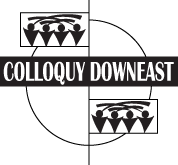Nature Writing in the Anthropocene
| |||||||
Is it possible to find a place between denial and despair as we witness the climate crisis, the disappearance of species, and relentless environmental disasters? How do we not shut down or give up? A new canon of nature writers is beginning to map this difficult terrain. They bring together scientific rigor, lyrical writing, and wild compassion to tell new stories of the places and times in which we live.
In this colloquy, we will read the work of four diverse nature writers to explore our human relationship with the rest of nature in the Anthropocene, a proposed new geological age in which human activity has become the dominant force influencing Earth’s environment and climate.
Through reading and discussions, participants will come away with new perspectives and a deeper appreciation of the wild lives around us and our place among them. Participants are encouraged to spend time outside in nature every week and briefly share their experiences as part of our conversations.
Kimberly Ridley is a science writer, essayist, and author most recently of Wild Design: Nature’s Architects, as well as award-winning nature books for children, including The Secret Pool. She is a contributing editor to Down East Magazine and teaches nature writing workshops for all ages.
Syllabus/Reading
Readings:
Week 1 – November 2
Nature as Mandela, Observation and Contemplation – The Forest Unseen by David George Haskell
Suggested Chapters and Questions – Week 1
Week 2 – November 16
Reciprocity with nature and toward a grammar of animacy – Braiding Sweetgrass by Robin Wall Kimmerer
Suggested Chapters and Questions – Week 2
How Braiding Sweetgrass became a surpri…ng — bestseller – The Washington Post
Essay By Robin Wall Kimmerer – The Serviceberry – Emergence magazine
OnBeing – Krista Tibbet Interview with Robin Wall Kimmerer
Week 3 – November 30
Nature and Race: Who gets to enjoy the outdoors? – The Home Place by Drew Lanham
Suggested Chapters – Week 3
Orion magazine- 9 Rules for the Black Birdwatcher – Drew Lanham
Orion Magazine- Forever Gone – Drew Lanham
Krista Tibbetts OnBeing Interview with Drew Lanham
Week 4 – December 7
Is wonder relevant in the Anthropocene? – World of Wonders by Aimee Nezuhukumatathil
The facilitator also will provide an optional reading list of additional essays by leading contemporary nature writers such as Helen MacDonald, Robert MacFarlane, Kathleen Dean Moore, Terry Tempest Williams, and Scott Russell Sanders.
▼ Registration
Registration
Bookings are now closed (or the colloquy has been cancelled)
We aren't currently accepting bookings for Nature Writing in the Anthropocene.
If you are trying to pay for a colloquy that you've already attended or have questions about refunds, please contact our Treasurer to work out the details.
▲ Hide...
